Founded On?
Nick Joseph writes: Cayman is a fascinating place to live. If you take the time, you can find yourself immersed in a distinct culture, one that has been hewn in adversity by people from all over the world, coming together to create what we have today.
This article attempts to identify a few key elements of our past and to emphasise some of the highlights (and lowlights), the echoes of which reverberate in the nuances evident in our society today.
What follows may be new to many of us. It differs in some respects from much of what we have been previously told, and it reminds us of the importance of raising questions.
In order to know who we are today, we must understand where we came from.
We have all been told of our “discovery” by Christopher Columbus on 10 May 1503. Ferdinand Columbus (Columbus’ son) recorded that they came in sight of two islands “low on the horizon, and the sea about them was filled with turtles insomuch as they appeared to be small rocks”. They named the islands “Las Tortugas” (The Turtles) and continued their voyage.
Our history accordingly credits Columbus as our European discoverer.
He almost certainly was not.
It appears the first evidence of our Islands falling under European gaze came at least a year before Columbus — and the eyes were probably not Genoan or even Spanish but likely Portuguese.
The Cantino planisphere of 1502, a quite beautiful map of the world, depicts information gathered in the years prior to its creation and clearly shows Cuba, Hispaniola and Jamaica. Off to the west of Jamaica, a group of islands (that can only be the Cayman Islands) is clearly portrayed. None of the (Cayman) islands are individually named, but the area is called “The Antilles of the Crown of Castille” (my translation of the words “Las antilhas del Rey de caftella”).
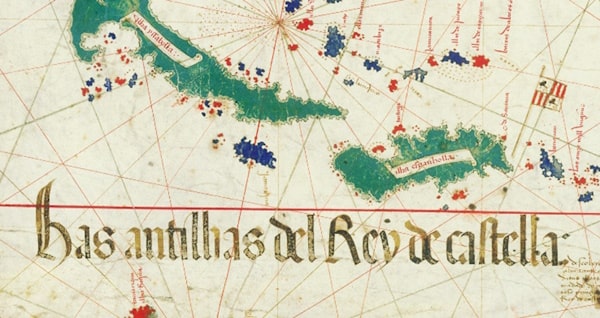
Today, the area is the Greater Antilles, which, despite our relatively diminutive size, the Cayman Islands can claim to be part of.
The word Antilles comes from ancient times and was the name given to semi-mythical lands somewhere west of Europe in the Atlantic. There, as legend describes, Iberian bishops fleeing Muslim invaders from North Africa are reputed to have found sanctuary.
Well, here we are. Sanctuary in a crazy world. Paradise found.
By 1523, the Turin World Map, widely considered to be one of the most accurate cartographic works of the Renaissance (Look it up, it’s stunning!), referred to our islands as “Lagartos”, Spanish/Portuguese for lizards/alligators. Later, we would become known as Caimans. Actually, on a 1597 map, Little Cayman and Cayman Brac were named the Caimanes, with Grand Cayman being named Caiman Grande. Later again, in 1608, Grand Cayman was recorded on a Dutch map as Caÿman Magnus.
Notwithstanding our history, no one should treat this as permission to refer to us as The Caymans!
Caiman is the Spanish derivative of the Carib word acayuman, meaning alligator/crocodile. Caribs do not seem to have ever been here. The native peoples of this area were, in fact, an Arawak people — the Western Taino — and yet there is no clear evidence of them living here, despite their culture having pervaded Cuba, Jamaica and the Bahamas. They will have almost certainly visited.
In actual fact, the Dutch were the first known (albeit temporary) inhabitants of the Cayman Islands. They wrecked their ship, the Dolphijn, in 1630. Those sailors were also our first shipbuilders. One hundred and twenty-two crew members survived for around 16 weeks while they built a replacement ship, which they named the Cayman. Upon its completion, they successfully sailed towards Havana, abandoning the vessel when they encountered and were rescued by another ship near Western Cuba.
Francis Drake appears to have been the first Englishman known to set foot on Grand Cayman. He came with 23 ships in 1586, looked unsuccessfully for water, did battle with “crocadiles” and provisioned with turtle (which provided “verie goode meate”). This Elizabethan Sea Dog and his gallant men of derring-do, with frilly collars, stayed for two days, then set fire to the island, ostensibly to deprive the Spanish of access to useful timber, and promptly left.
Our fondness for eating turtle (although now farmed) has endured. Within my life, we still penned them in “crawls” — a direct adaptation of the Dutch word Kraal. We also seem to be re-discovering our origins as the culinary capital of the Caribbean.
We continued as a stopping-off point for the provisioning of ships of many nations and, of course, although later, of those flying the “black flag”. We were frequented by Dutch, French, Portuguese and Spanish, as well as the English. Commerce developed to supply the transient vessels, first with turtle and later with pork — perhaps the original duty-free product available to people on visiting ships in the namesake Hogsty Bay. Ships were frequently careened in the area of Duck Pond, which had an adjoining turtle crawl.
Oliver Cromwell’s “Western Design” sought to end Spanish dominance in the West Indies. In May 1655, his army, following a failed attack on Hispaniola, captured Jamaica. Many of the Spanish colonists hid or fled. Their slaves escaped into the mountains and formed the community which fused with the few remnants of Taino and became known as the Maroons. They were never defeated.
A number amongst those earliest colonists were Jews, who themselves were escaping the Spanish Inquisition. Descendants of those original Spanish colonists and the original Maroons are amongst the inhabitants of Cayman today.
In the late 1650s, one of Cromwell’s sons arranged for the kidnapping and otherwise forced removal of thousands of Irish, together with some Scots and others, from their homelands and brought them to Jamaica in order to populate the island and enjoy the benefits of free labour.
Following Francis Drake, the second British people known to be in Grand Cayman were the antecedents of “Old Isaac” Bawden. Isaac and a widow from Cayman named Sarah Lamar are recorded as having been formally married in Port Royal, Jamaica, on 9 November 1735. They are understood to have founded the Bodden clan. At the time of Isaac’s marriage to Sarah (indeed, on the same day), the couple registered the births of two sons, Benjamin Lock Bawden (born 17 December 1730) and William Price Bawden (born 11 November 1732). The first known “born Caymanians”, Benjie and Billie?
Perhaps not.
Isaac was himself the grandson of the first actual Bodden (or Boden or Bawden) to settle in Cayman. Isaac’s grandfather is believed to have been one of Cromwell’s soldiers who captured Jamaica from “the Spaniards” in 1655. His first name may have been lost to history, as are the details of the Watler (or Walter or Walters) who accompanied him to Grand Cayman from Jamaica in around 1658. That original Bodden may be that original immigrant’s son, who was to be Isaac’s father. Isaac’s father may (or may not) have been born in Cayman.
Of course, for anyone to have been born, women need to have been intimately involved. Sadly, history seemingly does not accord those women the recognition they deserve and the names of any who came before Sarah Lamar may be lost.
Our relationship with “the Spaniards” was not good. This was not surprising. Oliver Cromwell’s army had indeed come to the region with the stated aim of dispossessing the Spanish of some of their territories.
Raids by Spanish forces from Cuba on the sparsely populated and poorly defended Cayman Islands were frequent. On 14 April 1669, a Portuguese “privateer” in Spanish service, Manuel Ribeiro Pardal, conducted a successful raid on Little Cayman, then probably the most populous of the Cayman Islands. He landed some 200 men and reportedly burned some 20 dwellings to the ground. Several turtle sloops were also destroyed by fire.
There was plainly a penchant for burning stuff in the early days. Royal instructions were received by the governor of Jamaica in 1662 to build fortifications in Cayman, and the resulting Fort George was eventually built in 1790 at what is today the end of Fort Street in George Town.
Piracy continued in our area. None other than Edward Teach, Blackbeard himself, captured a “small turtler” in Grand Cayman in the spring of 1718. Accompanying him was Israel Hands as master of the newly captured 10-gun log-cutting sloop, Adventure. Hands, who was later shot in the knee by Blackbeard, was immortalised as a character in Robert Louis Stephenson’s 1883 classic, Treasure Island.
By the dawn of the 19th Century, Little Cayman and Cayman Brac seem to have been abandoned and left without any permanent population.
As we approach the first formal recognition of Emancipation Day in 70 years, we must also note that in the 1802 census, of the 933 residents of Grand Cayman, 545 enslaved people are recorded. Amongst them will likely have been a heroic woman named Long Celia. I do not know enough about her, but in 1820, she overheard some slave owners discussing the potential freeing of the slaves.
What would long overdue European objections to slavery matter (the British having finally outlawed the transatlantic trade in 1807) if no one told the slaves? Celia did. In Bodden Town, in a public place and following her conviction for stirring up rebellion and sedition, Celia paid the price with 50 lashes.
We should all remember Long Celia and commemorate her far better than we do.
By the 1802 census, not every person of African ancestry in Cayman was a slave and not every slave owner in Cayman was white. Indeed, the census indicates that of the 545 slaves recorded, 49 were owned by persons “of colour”.
Some of the slaves in Cayman seem to have been brought from Central America. Certainly, in 1776, seven Sambu Indians, an ethnic group now known as the Miskito and who are of mixed African and indigenous American ancestry, were taken from the Mosquito Coast of Central America and sold in Grand Cayman. The Miskito people were enraged and held the British responsible.
To ensure peace and effectively avoid a war, the British sent HMS Porcupine to Cayman to ensure the release of the seven. Later, in 1805, another Miskito in Cayman (who, it seems, would have been recorded as a slave in the 1802 census) successfully petitioned for her freedom and that of her two children, relying on the fact that under Jamaican law, all descendants of Indians from 1741 had been declared free.
This all adds to the nuance, to the complexion, and to the complexity of the Caymanian people and their history. “Mix up, mix up,” as we say.
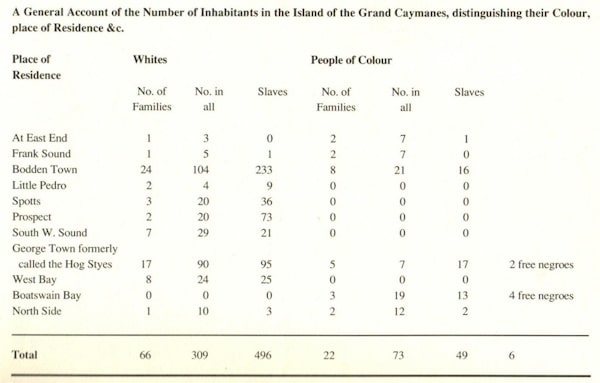
The circumstances of the taking and later freeing of the aforementioned seven became known as the “Sambu Indians Affair”. That “the lawless Caymanas” was ungoverned and seemingly accountable to no central power had risked an important political alliance between the British and the Miskito. This directly contributed to the British determining that we needed to be treated as a dependency of (the colony of) Jamaica in order to help ensure that there was some jurisdiction to which we were “amenable”.
We seem to have long struggled with rules generally and in particular, those relating to immigration. The language of the British Commissioned Corbet Report of 1802 weaves a magnificent tale of the rule of law in the Cayman Islands at the start of the 19th Century. It describes as follows:
“The only laws or regulations in force they consider to be those of Jamaica, to the extent they are acquainted with them. They have no particular police. The magistrates are understood to have the same power as those in Jamaica — when any new measure is to be adopted, it is generally submitted by them to the consideration of the inhabitants at large. An ‘ill disposed’ individual may give some trouble, and one of this description was lately shipped off the island to America, by the United Voice, by compulsion of the inhabitants.”
Imagine, 225 years ago, getting “voted off” the island! How embarrassing. It seems that the earliest Caymanians adopted firm immigration policies and were even able to achieve consensus as to what they should be.
It is also worthy of note that of 88 households recorded in the 1802 census, 15 were listed as headed by a Bodden. Whether he himself is regarded as a first- or third-generation Caymanian, Old Isaac certainly left his mark.
The Boddens seem to have come (whether willingly or not) from the southwestern peninsula of England, as do patties (there, minus the spices) called “pasties” and heavy cake (there, minus the cassava) called “hevva cake”.
Long Celia, as with most people recorded in the 1802 census, was probably born in Cayman. Her people were taken from Western Africa and brought to the Caribbean, as were the ackee tree (and fruit) and Anansi stories, an Ashanti equivalent of Aesop’s Fables on which many children in the Cayman Islands are raised to this day. I am, myself, privileged to have been raised with words of wisdom and morality from a trickster spider, as communicated by a wonderful carer from Jamaica.
The 1833 Slavery Abolition Act came into force on 1 August 1834. We cannot celebrate that date as the end of slavery because, as is too often the case, we invent more flexibility in the application of legislation than the legislators anticipated. The British eventually had to land soldiers here on 3 May 1835 to guarantee the end of slavery once and for all. That is why we celebrate this important inflexion point in our history in May, some ten months after the fact.
Better late than never. I can only hope that Long Celia witnessed it.
This May, for the first time in my lifetime, we formally recognise Emancipation Day on 6 May in addition to celebrating our perceived “Discovery” — this year, on 20 May.
In 1992, 500 years following Columbus’ “discovery” of the Americas (which he had, in fact, believed to be India and which in 1492 was already populated by an estimated 60 million people) and 495 years following Columbus’ sighting of the Sister Islands, I was working for a short period in Little Cayman. The population was, as I recall, less than 30.
Wayne Smith, a displaced Floridian, and I had been taking tourists fishing. We spied something strange on the horizon. Little Cayman District Officer Bruce Eldemire saw it as well. Our boats headed towards it, with Bruce arriving shortly before us. It was an unmotorised raft, hewn together with logs and bamboo. On board were two Germans.
Christina Haverkamp and Rudiger Nehberg had crossed the Atlantic, largely adrift, to draw attention to the continuing oppression of Yanomami and other indigenous peoples of the Americas and the destruction of its rainforests. They had first crossed from Dakar in Senegal to Fortaleza, Brazil. From there, they set off for the United States, stumbling into Little Cayman.
They were in a weakened state and had been harassed by persons whom they described as pirates in the week before being “rescued”. They had a shotgun, which Mr Eldemire promptly took into custody. Rudiger later shared with me that his sight of the small Union Jack in the corner of the Cayman flag flying on Mr Eldemire’s boat may have saved the district officer’s life.
Rudy and Christina were seeking to make a simple point at a time when the world was celebrating the 500th anniversary of Columbus’ “achievement”. If they could cross the Atlantic with a simple raft, why was the world stopping to laud Columbus? He had the backing of the Spanish Crown, multiple navigable ships and technology. Even leaving aside the horrors that followed for the indigenous people of the Americas after Columbus’ arrival, including disease, genocide and slavery, his voyages may not have been worthy of such widespread and significant celebration.
With the help of the people of Little Cayman (and, I believe, Thompson Shipping), Rudy and Christina ultimately made it, with their raft, to Washington, DC and pleaded their case in front of the White House. Few braver people have I ever met.
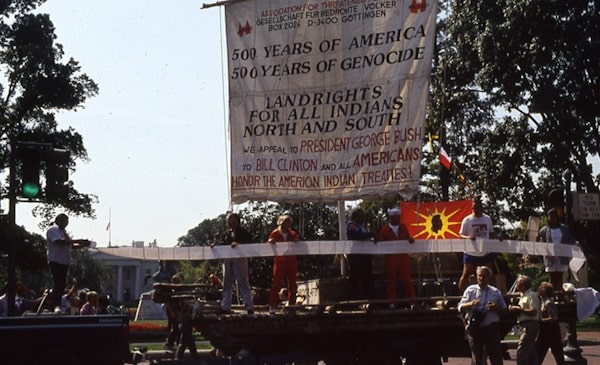
I do not know if Rudy and Christina were right. They certainly caused me pause for thought.
“The Spaniards” were not the last to raid Little Cayman. Five youths from Grand Cayman share that distinction. On a Tuesday afternoon in November 2013, they landed in two boats. I recall reports suggesting some were dressed as Ninjas. They tried to rob the very small Cayman National Bank office in Blossom Village but omitted to note that the bank was closed on Tuesdays or the implications of the police having a helicopter. The RCIPS intercepted the youthful miscreants on their return journey to Grand Cayman.
Nor were Pardal or Blackbeard the last known pirates (or privateers or buccaneers) to operate in Cayman waters. That distinction seems to have been afforded to Gideon Ebanks. In 1933, he led a failed attack on a passing Cuban ship. It did not end well for Gideon. His body is understood to have been later found in the mangroves, where he was hiding out.
Fort George, built to defend against Spanish raiders, was ultimately destroyed, not in a raid by Spaniards but by Cayman’s first National Hero, James “Jim” Manoah Bodden, on 11 January 1972, following, of all things, a planning dispute. Mr Jim, who contributed much but was not perfect, got a statue.
There is no statue commemorating Long Celia… yet.
All of this and so much more is part of Cayman’s history. Founded on the seas. It is complicated. It is imperfect. It is discovered and lost, written and re-written. It sometimes differs materially from that which we have been told.
Whichever version we subscribe to, it is clear: Not everyone who comes here means us well. Not everyone who comes here comes because they want to. Not everyone that comes here will stay — whether we want them to or not. Not everyone that comes here will leave — whether we want them to or not. All impact us, and every impact causes reverberation and echoes. They develop the rhythm to which we march.
The bizarre facts are thus: We are (put bluntly) a colony, and yet were never colonised. The Dutch, English, Irish, Welsh, Scotts, Taino, Akan, Ashanti, Yoruba, Ibo and Ibibo, Miskito, Portuguese and Spaniards, and press-ganged assorted scallywags and indentured servants of many (and of no) nations have fused to make us who we are. Many others now join us on the journey to who we will be.
Some were pulled. Others were pushed.
More will come.
Who they are and where they will take us rests in our hands.
Note to reader: I encourage everyone who lives here to dig a little into the past and discover more. The National Museum, and National Archives are wonderful resources, as is the local history and culture course available to applicants for Permanent Residence and taught through UCCI.
Some of the texts from which much of our fascinating story can be gleaned (and which persons preparing to take the Permanent Residence Points System History/Culture test are encouraged to read) include:
The Cayman Islands in Transition: The Politics, History and Sociology of a Changing Society, by J. A. Bodden (ISBN-13:978-9766373221)
Founded Upon the Seas: A History of the Cayman Islands and Their People, by Michael Craton (Kingston: Ian Randle Publishers, ISBN-10:0972935835)
The Lawless Caymanas – A Story of Slavery, Freedom and The West India Regiment, by Brian Kieran (ISBN 9768012900)
Further reading which may be of interest includes A Brief History of The Cayman Islands, by David Wells of the West India Committee for the Government of the Cayman Islands.
- Fascinated
- Happy
- Sad
- Angry
- Bored
- Afraid
Category: Viewpoint















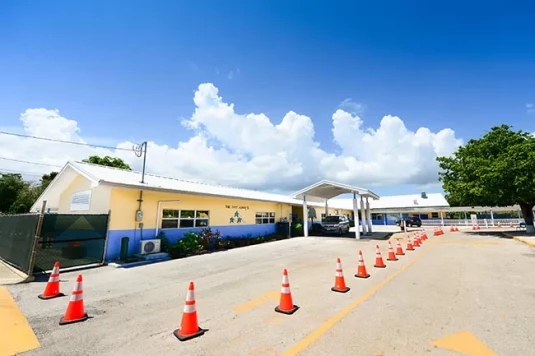
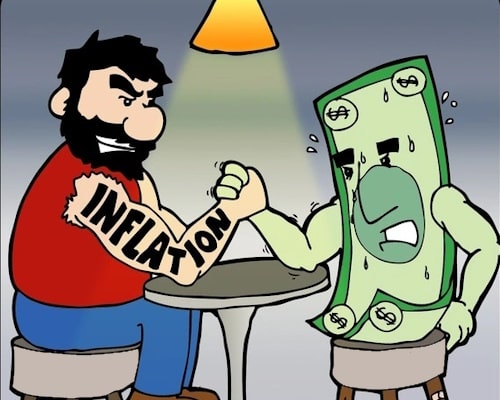
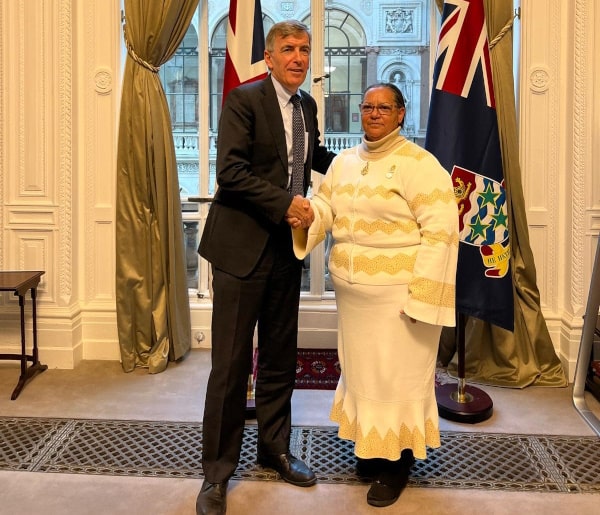

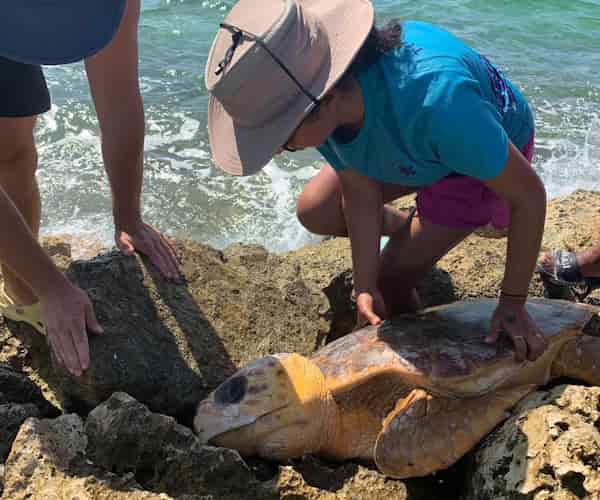
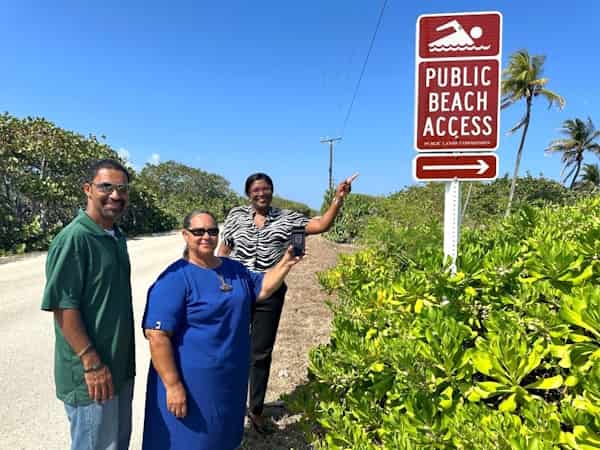
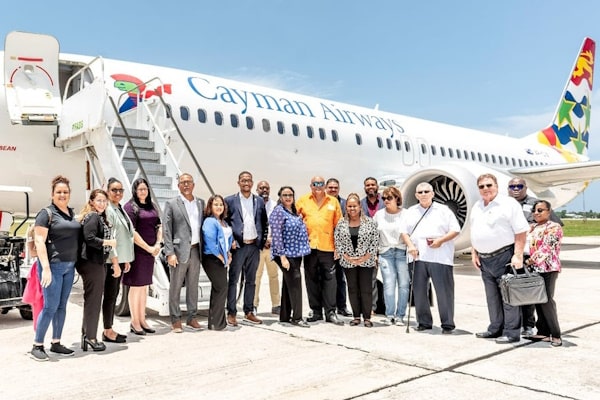
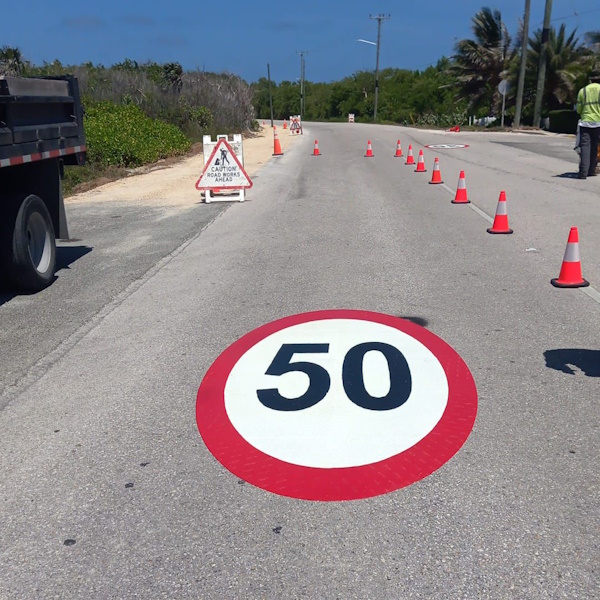
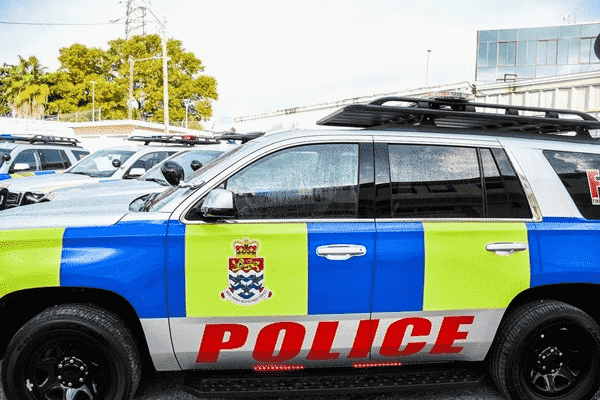

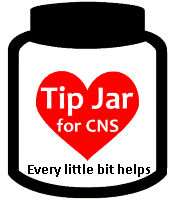




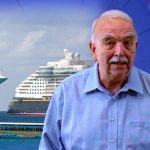
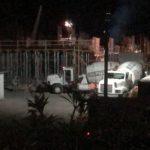


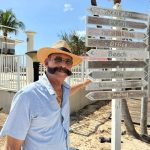

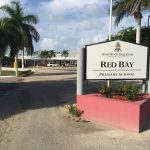
Bill Helfrecht mentioned that Nick is in the legal profession, that is his brother. Also it was Desmond Seales who stepped in to prevent the total destruction of Fort George, where part of a wall remains. Pity we don’t feel comfortable enough to add our names. It seems the ‘freedom of speach’ does not exist in the Cayman Islands.
CNS: Nick Joseph is a lawyer.
Please note that “freedom of speech” is provided for as a fundamental freedom, pursuant to section 11(1) of our Bill of Rights (enshrined in our Constitution), which provides:
“No person shall be hindered by government in the enjoyment of his or her freedom of expression, which includes freedom to hold opinions and to receive and impart ideas and information without interference, and freedom from interference with his or her correspondence or other means of communication.”
Very interesting to read, Nick.
“By the 1802 census, not every person of African ancestry in Cayman was a slave and not every slave owner in Cayman was white. Indeed, the census indicates that of the 545 slaves recorded, 49 were owned by persons “of colour”.”
Interesting!
Inconvenient truth, to some narratives.
Local narratives that is..but then the truth does not serve a certain demographic’s purpose does it..?
Not local. Jamaican and Trinidadian. Please understand the distinction.
Wait till you find out who sold them to the transatlatic slavers in the first place. Thank god we live when we do!
8.16…Their own African village chieftains sold their people to North African Arab slavers , who then sold on to the French American and British traders.
Hundreds of years before Barclays would open their first office, Cayman was founded on the industry of rogue ship captaining, valuable cargo wrecking, insurance scams, and scrap salvage negotiations. Before motor power, Cayman was geographically positioned along the “safe” traffic lane, in a key spot on the New World Trade (cane, rum/gold, slaves) traffic conveyor. For hundreds of years, almost every ship from Europe had to go past our islands, which were not mapped very well until Gault. There are hundreds more shipwrecks in the Cayman Islands than any other location in the West Indies. Theft and extortion are part of the Caymanian culture for hundreds of years, and it’s a tradition celebrated with a Piracy Heritage Month.
Today we continue to bring the slaves from South and Central America as well as the Philippines and Jamaica.
Conflating poor wages by Western standards and an economy class plane ticket with the transatlantic slave trade shows a complete lack of perspective.
Can we free the Jamaican’s and send them back?
The modern day slave owner has entered the chat.
What are you babbling about? Do you not understand the VAST difference between literally owning a person and just being a crappy employer? Dear god. Pick up a book you ignorant clown. And before you accuse me of any more despicable crimes I employ one person who almost certainly makes more than you.
Free will is the only difference. Today workers are duped into getting here, then paid so little, they can’t afford to live, leave, speak up, or change employer without retribution of some kind. Caymanian permit holders love holding these human reigns, treating their workforce like indentured beholden animals. Not very Christian.
#caymankind
Spoken like a true virtuous person. Bravo.
Great work. If only the Public Libraries had a copy of our own history book on loan, people might borrow and study it in depth at home.
Surely each MP can purchase 1 copy each, for their district Libraries?!
5.17pm They can’t afford it.
Splooged it all on the new Brac school bro
Fascinating insight into the unsung history of the Islands and their diverse population. Nick Joseph may have missed his true profession as a social historian; but that would have been a great loss to the legal profession.
An excellent article Mr. Joseph. Yes, you were not born here but you and your parents are Caymanian, not just on paper but in heart, in my opinion. We know of, and appreciate, their contributions. I say that because one post referred to you as a “farreona”.
Thanks for that nugget about Jim Bodden – and a reader posted the accuracy of how he became “national hero” (not mine, though!). He is indeed the architect of our present “hand-out” political system, the purveyor of “Caymanian entitlement attitude”, the promoter of anti-foreigner sentiments (English and Jamaican were his most abhorred). As far as I’m concerned “tear down that statue”!
As a boomer born in Cayman in the late 1950s, I’ve been fortunate/unfortunate to witness the greatest period of growth in our history…so far. It is appalling how many people who call themselves Caymanian, some by birth, know less about our history than what you’ve published in this article. That is partially due to our history not being taught in schools or our history being “taught” in schools by people who have no clue…so they make it up.
I once recall a tourist map which was circulated broadly in the islands which had a small piece of Cayman “history” included for visitors…it declared Pedro Castle was built by “notorious pirate Pedro the Terrible”!
Personally, I see Cayman as a mini-Manhattan melting pot. In the not-so-long future there will be no one who can trace their ancestry in Cayman back more than two generations (unlike some like myself who can trace ancestors on both sides here back 9 generations) – but we’ll all be “Caymanians”.
Manhattan’s permanent residents consider themselves all as New Yorkers…no matter where gramps came from.
Would love to see Sandra Hill voted off the island and bring our beloved islands back to a place of decency and less division.
It’s not Sandra Hill that should be removed to achieve decency and less division…….there’s a long list of those whose repatriation would better achieve those goals.
If she wasn’t doing her thing countless corrupt individuals would get away with even more. I’m not condoning everything she does but you have to agree she has balls to call out big wigs who are bankrupting us morally and financially.
Yet, she hasn’t uncovered anything of substance over the countless years of trying to scandalize anyone. There are ways better suited and the islands are not any better for having her on them. She should go. Let proper media and journalists who understand comprehension do the job she is incapable of doing with integrity.
Many in the mainstream media have too often refused to step on toes. Legge tried, but look what happened. Sandra and CNS help fill a void – and we should thank God for them both. The alternative is much worse. I would much rather have and tolerate unpopular and even unintentionally erroneous speech, than to be continually fed a diet of biased self serving propaganda.
So if there were a minister who was at some variance from compliance with the very laws his or her ministry was charged with enforcing, where would we read about it? I am confident I haven’t seen it in print anywhere – so are you suggesting it couldn’t be happening?
She only reports on those who don’t support her methods. It has nothing to do with integrity. Nothing on Wayne, Sabrina or anyone that who stayed squarely in his camp. She even defended Mckeeva Bush when it was politically convenient for Wayne to form “his” government. Yup, she needs to go.
Look at who advertise with her now and you’ll see that those who she used to criticize are those who advertise with her and now she no longer “reports” on them. Think FIN, Dart… If don’t want her scandalizing you then pay her in advertising dollars.
So…just like when a National Newspaper loses all its advertising revenue because it criticised (for good reason) aspects of our governance? Does that mean it doesn’t shine the light it should? You cannot have it both ways…
Adding to the “note to reader”. There is a very special place by Gun Square in Bodden Town called Nurse Josie’s Senior Citizen’s Home, that showcases some wonderful artifacts and stories of our unique history. I would encourage everyone to visit this museum that has been put together by some of the most dedicated women of Bodden Town.
It’s sad what has become of Bodden Town for those women.
Bodden Town should be renamed Little Kingston. There are more Jamaicans there now than Caymanians.
Some of whom are quiet and hard working, others of whom are loud, aggressive obnoxious folk who nasty up the place with derelict vehicles and tossing their half eaten curried goat and cow foot out the car windows in peoples yards.
Just simply superb.
“We should all remember Long Celia and commemorate her far better than we do.”
Completely agree with you Nick. She should have a bigger and more prominent statue than any other in Heroes Square.
Brilliant article. Why aren’t they learning this in school?
You all will come to regret this. Woke has come to Cayman. We will be tearing down all of the statues and/or any references to Christopher Columbus, rewrite history and then the white people will be run out of Cayman just like Jamaica.
Unfortunately, I saw this coming because Caymanians are always follow fashion.
If learning about our history is “WOKE” then I am all for it. When I was in Primary School many decades ago, I learned that Christopher Columbus never step foot in Cayman. Obviously you were’nt paying attention in class but it is not too late for you to start now.
He mentiioned Cayman Brac and Little Cayman but made no mention of Grand Cayman. So yes Columbus did discover the Cayman Islands. This information is factual.
No he didn’t. His first sighting was in 1503. What part of “the Portuguese made a map drawn in 1502 which shows the Cayman Islands on it” do you have difficulty with?
I didn’t say he stepped foot in Cayman. No thank you to the sub par schools of the Cayman Islands.
If Cayman imports and retains too many people from one place, then the behaviors and cultural attributes of those people will be imported with them and tend to become prevalent in our society. That is amongst many reasons why balance is critical, and the tradition “Caymanian” voice must be respected and encouraged to remain dominant.
8.49am You must be thinking of Britain. London now has a majority of foreign born residents and never again will it have an elected Mayor of English ancestry. In the Midlands a large number local councils now comprise of a majority of Moslems, and one just elected proclaimed Allah Akhbar! at his celebratory speech!.
Malarkey!!!
https://www.telegraph.co.uk/news/2024/05/04/green-party-mothin-ali-allahu-akba-leeds-gipton-harehills/
Troll alert.
Yo. How you chew down my comment so? I know the whole Columbus thing is a damn blasted lie, probably long before you wore diapers. And your comment generally is plain ignorant and wrong. I repeat Celia should be recognised in Heroes Square. If you don’t know who Celia is trying read and comprehend before you open your damn mouth. Tssk
I HEAR YA tRINI
oh gosh
What a stupid take on history.
Nic, as a student of history myself I know how much work that took. Good job.
Good job on this succinct history Nick!
Good Job Nick! I thoroughly enjoyed reading your Voewpoint
I completely agree with your point about our first national hero. He is the cause of a lot of the issues we have. We developed the way we have because he allowed money to talk instead of putting in place plans for how we came to develop. Seven Mile should have been developed much more like how it was in other places like Australia. Beach, boardwalk, road and then restaurants, condos and hotels. We would all have had access to the beach, not just those that can afford to hold “title” to the land.
Good read thanks
A lot more Pirates here now, versus the Olden Days.,
Usually with British accent
A lot, but possibly even more from Yard. Just sayin.
The worst I ever saw here happened to be from Australia.
How about we agree that piracy has been outlawed, and from wherever the pirates may originate, we shun them and stamp them out with equal fervor? By United Voice, even?
What a very interesting and well written article! Thank you Nick for taking the time to research and write this, and to CNS for publishing it. I learnt so much!
Nick – could you please cite where you found the fact that “acayuman” is a Carib word for alligator? the only reference I can find for this anywhere is an article written by Nick Jospeh published on 3rd May 2024.
https://tt.loopnews.com/content/10-amerindian-words-you-may-not-have-known-about
History is invariably a reconstruction of outlooks and outbuildings. In a frontier outpost like the Caymanas there were no full time chroniclers. Snippets passed down are what we have to work with.
However, as the Caymanas was, until 1959, a minor department of Westmoreland parish, Jamaica, and thereafter a colony in its own right, it follows that, at any given time, it has existed and been governed, warts and all, according to accepted British norms.
And long may that continue eh?!
Wonderful people, the Romans.
As we celebrate Emancipation day, Our Romans should be thanked not only for abolishing slavery, but also for following it up to make sure the abolition was put in effect…. That’s what our Romans did for us.
Excellent well written article i certainly learned alot. Wish the young ones of this generation knew these information but I highly doubt they know or were taught anything before the year 2000!!
Some of us have been frowning on the mere mention of ” Caymanians ” having slaves. So many do not even care about our history. Good Job Nick. Nasaria Suckoo- Chollette has quite a bit of writings on Long Celia including a very beautiful poem. Thanks to her as well.
Nasaria and Nick were literal classmates in the 1970’s. A wonderful time in Cayman when all children literally grew up together.
04 @ 8:30 am — also a time when our education system was strong and facts were taught in schools.
Fascinating, thank you for taking the time to write this and to CNS for publishing it.
Some of us maybe resentful of this writing by a farreona . The truth be told the academics amongst us are too busy sushuing bout what’s wrong along with another part grumbling about politricks and all not being able to form consensus or move hand or legs or brains etc to do and/ or make the changes to our problems or even write our history for which there is so much more especially in later years.
So thanks to the writer thank you sir, you are appreciated.
Caymanians come forth will ya can we stop procrastinating on what we know we need to do, for past, present nd future generations.
God Bless these Cayman Islands
So far Soul Rebel you are the only one being resentful. Nick’s parents, he and his brother has been part of Cayman for many decades. They came here, built on the foundations they found and has certainly enhanced, improved and protected our homeland. However, many did the complete opposite. Whether you are born here or came by other means please always remember that we can always use a few helping hands along the way.
Bravo 8.07, but to be fair …
I didn’t think Soul Rebel was being resentful.
I read ‘It’s a pity that our generational Caymanians don’t seem to show the same interest in our history.”
…”he and his brother”….AND Sister..
Just sayin..
8:07 PM you missed the point chappie or ms, chappie. it don’t matter much where the writer is from, but the acknowledgment and thanks is of primary importance. i guess you put on blinders after “fareonna” huh!
You seem to have also missed that the missive was also meant as a rallying call to caymanians to get involved yes in pleading for our history to be properly documented and taught in our schools in particular to our children whose mind set in many cases is being is being driven by the myriad of cultures and background of yes too many foreigners 137 they say nationalities amongst us in particular in grand Cayman.
8:07 PM if my missive disturbed you well i wont apologize but i daresay the time will come when what i and perhaps many others have to say will resonate more clearly, its just a matter of time homey.
Inshallah
Excellent digest of our history, Mr Joseph, and easy to read so I hope our politicians will do so. I suspect they know very little about all this. It was interesting to see you include the bit about Jim Bodden knocking down Fort George. There are still some of his followers, the equivalent of the Maga folk in the US, who deny he did this, even though there is a photo of him driving the backhoe to do it, a photo which mysteriously began to NOT appear in local media after his statue and veneration as a Hero were established.
Agreed. For that childish act he should not have been declared a “Hero”. That demolition overcame any small accomplishments he made. If fact the whole hero thing seemed to come about some supporters got a statue made and had nowhere to put it. Then Big Mac, who had been successfully sued by Mr. Jim previously, changed his tune and came up with the “hero” status.
This brings to mind a certain person driving a steamroller …
well done Nick!
skip the essay…just watch secrets in paradise!!!
Yeah right, and catch a glimpse of the shallow low life pretending to represent Cayman.
Well done Nick Joseph.
You have taken a great deal of time, and expended much effort in setting out a scholarly and very well written timeline of where we came from, and how we got to be who we are.
Thank you also for the many bridges you build to help Cayman, and I wish you success in your own newly set up business.
Sad that the writer seeks to make light of the 2013 Little Cayman robbery. This was a horrific event for everyone who had firearms shoved in their faces by adult criminals. Their release without prosecution was a travesty. Paradise was truly lost on that day.
If he was going to make light of it , knowing how Nick Joseph writes , we would all be ROTF laughing at the hapless Jamaican idiots who behaved like ignorant clowns.
I took the restrained reference to the event as an interesting footnote to the history of Little Cayman.
I totally agree with you anonymous @10:26. It was merely a footnote. The story was not about that. The person”s beef should be about their release but definitely not Nick
A great read, Nick. Very well written.
The lack of recognition for Long Celia is likely due to the extreme reluctance by Caymanians, especially politicians going back forever, to acknowledge anything bad in Cayman’s history. Slavery? Nope. Racism? Nope. Pirates? Nope. Domestic violence? Nope. Rose-coloured glasses on steroids. Everything was perfect! It’s very frustrating. Every country has darkness in its history.
Roy Bodden going have a melt down about a slave being beaten. I took a class with him at UCCI back in the day and he was adamant ‘slaves’ weren’t really slaves and lived liek family with their ’employers’.
You clearly don’t know Roy.
and you clearly can’t comprehend English.
WoW! As an Xpat living here, this has certainly been one of the most interesting articles I’ve read about the history of Cayman! Definitely has me wanting to know more.
This article should be published as a pamphlet and issued to ALL schools to enhance their knowledge of Cayman History.
This should be regarded as Education ..not just schooling.
Amen.
Now that was a refreshing and somewhat fascinating article. Thanks Nick.
I may just head over to the Museum and Archives to do a little more reading.